Global burden of vertebral fractures from 1990 to 2021 and projections for the next three decades
- PMID: 40382604
- PMCID: PMC12084923
- DOI: 10.1186/s13018-025-05915-9
Global burden of vertebral fractures from 1990 to 2021 and projections for the next three decades
Abstract
Background: Vertebral fractures are linked to significant disability and mortality risks. Yet, existing studies on their global burden are outdated and lack predictive foresight.
Methods: Public data from the 2021 GBD study were analyzed to assess the global burden and epidemiological trends of vertebral fractures. The annual percentage change (EAPC) was calculated to represent temporal trends from 1990 to 2021. Machine learning was used to predict the global burden of vertebral fractures over the next 30 years.
Results: From 1990 to 2021, the global burden of vertebral fractures significantly decreased. The age-standardized incidence rates (ASIR) showed the largest decline in Eastern Sub-Saharan Africa (EAPC: -1.5; 95% CI: -2.0 to -1.0), while North Africa and the Middle East were the only regions to report an increase (EAPC: 0.3; 95% CI: 0.1 to 0.5). For age-standardized prevalence rates (ASPR), High-income Asia Pacific saw the steepest decline (EAPC: -1.4; 95% CI: -1.5 to -1.2), while the Caribbean experienced the largest increase (EAPC: 0.8; 95% CI: 0.4 to 1.3). Similarly, in terms of age-standardized years lived with disability rates (ASYR), the most substantial reduction occurred in High-income Asia Pacific (EAPC: -1.4; 95% CI: -1.5 to -1.3), with the Caribbean again showing the greatest rise (EAPC: 0.8; 95% CI: 0.3 to 1.2). Males generally exhibited higher age-standardized rates (ASRs) than females, although females aged 65-70 years old surpassed males. Predictive models suggest continued declines in global ASIR, ASPR, and ASYR by 2050.
Conclusions: Our study shows a steady reduction in the global burden of vertebral fractures from 1990 to 2021. Nevertheless, disparities remain across regions, with a positive correlation between ASRs with SDI.
Keywords: Epidemiological science; Global burden of disease study; Vertebral fractures.
© 2025. The Author(s).
Conflict of interest statement
Declarations. Ethics approval and consent to participate: Not required. Consent for publication: Not applicable. Competing interests: The authors declare no competing interests.
Figures
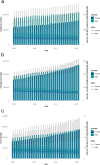

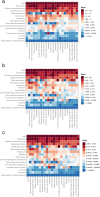
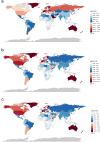
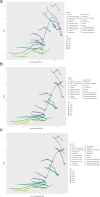
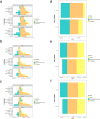

Similar articles
-
Global incidence, prevalence, and disability of vertebral fractures: a systematic analysis of the global burden of disease study 2019.Spine J. 2022 May;22(5):857-868. doi: 10.1016/j.spinee.2021.12.007. Epub 2021 Dec 11. Spine J. 2022. PMID: 34906740
-
Global, regional, and national burden of fracture of sternum and/or fracture of one or more ribs: a systematic analysis of incidence, YLDs with projections to 2030.Front Public Health. 2025 Apr 3;13:1565478. doi: 10.3389/fpubh.2025.1565478. eCollection 2025. Front Public Health. 2025. PMID: 40247872 Free PMC article.
-
Health inequalities in disease burden of dementia and early-onset dementia: findings from the Global Burden of Disease 2021 study.Glob Health Res Policy. 2025 May 19;10(1):21. doi: 10.1186/s41256-025-00417-x. Glob Health Res Policy. 2025. PMID: 40390116 Free PMC article.
-
Global, regional, and national burden of fracture of vertebral column, 1990-2021: analysis of data from the global burden of disease study 2021.Front Public Health. 2025 Apr 30;13:1573888. doi: 10.3389/fpubh.2025.1573888. eCollection 2025. Front Public Health. 2025. PMID: 40371297 Free PMC article.
-
Global burden of myocarditis in youth and middle age (1990-2019): A systematic analysis of the disease burden and thirty-year forecast.Curr Probl Cardiol. 2024 Sep;49(9):102735. doi: 10.1016/j.cpcardiol.2024.102735. Epub 2024 Jun 29. Curr Probl Cardiol. 2024. PMID: 38950720 Review.
Cited by
-
Epidemiology and Future Burden of Vertebral Fractures: Insights from the Global Burden of Disease 1990-2021.Healthcare (Basel). 2025 Jul 22;13(15):1774. doi: 10.3390/healthcare13151774. Healthcare (Basel). 2025. PMID: 40805807 Free PMC article.
References
-
- Kuharski MJ, Balmaceno-Criss M, Mansour A, Nadella A, Meininger K, Lou M, et al. The epidemiology of recreation-related cervical and thoracic fractures. Spine J. 2025;25(1):136–44. - PubMed
-
- Chen L, Feng Y, Zhang Y, Huang H, Guo X, et al. Multicenter, randomized, double-blind placebo-control intramedullary decompression for acute complete spinal cord contusion injury. J NEURORESTORATOL. 2018;6(1):165–70.
-
- Dong Y, Peng R, Kang H, Song K, Guo Q, Zhao H, et al. Global incidence, prevalence, and disability of vertebral fractures: a systematic analysis of the global burden of disease study 2019. Spine J. 2022;22(5):857–68. - PubMed
-
- Lips P, Cooper C, Agnusdei D, Caulin F, Egger P, Johnell O, et al. Quality of life in patients with vertebral fractures: validation of the Quality of Life Questionnaire of the European Foundation for Osteoporosis (QUALEFFO). Working Party for Quality of Life of the European Foundation for Osteoporosis. Osteoporos Int. 1999;10(2):150–60. - PubMed
-
- Choi HG, Lee JK, Sim S, Kim M. Mortality and Cause of Death in Patients With Vertebral Fractures: A Longitudinal Follow-Up Study Using a National Sample Cohort. Spine (Phila Pa 1976). 2020;45(5):E280-7. - PubMed
MeSH terms
LinkOut - more resources
Full Text Sources
Medical

